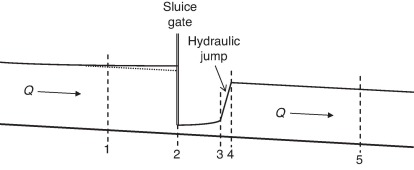Learning about open channel flows is a really crucial concept to master. They find application in a large variety of areas. Read on below to learn about in which where all they will be finding use in:-
- Irrigation
- Power Supply
- Drinking Water
- Conveyor Channel within Water Treatment plants
- Storm Waterways
- Public Fountains
- Culverts below roads
- Railway lines
We study this phenomenon in small-scale as well as large-scale scenarios. Accordingly studying these structures becomes all the more crucial. Basically, due to their importance, Open Channel Flow is studied in a large variety of areas.
In all Civil Engineering Assignment Help, additionally, these topics will be finding a great deal of application. As a matter of fact, this particular area of study forms about 25% percent of the total syllabus.
Table of Contents
By Open Channel Flows, We Mean The Following Concepts:-
Students often define Open Channel Flow as fluid flow as the flow on a free surface which is open to the atmosphere. Some Open Channel Flow Examples are:-
- Streams
- Rivers
- Culverts that are not flowing fully
- Irrigation Canals
- Sewer Systems which flow partially full
- Storm Drains
- Street Gutters
In open channel flow, you will be assuming that the pressure on the surface of the river is fully constant. Keep in mind another point the hydraulic grade line is at the surface of the fluid.
Different types of open channels can be defined as:-
- Rigid Boundary Open Channels
- Loose Boundary Open Channels
- Prismatic Open Channels
How Is Their Working Is Evaluated Using Open Channel Flow Equations?
Mathematics is the language of physics as well as engineering. Open channels are a very complicated concept to master. Many equations are developed to study their behavior as a result.
Mannings equation is a versatile formula that is made use of in this domain. All things considered, this equation finds application in:-
- Computing the flow in a channel
- Deriving the capacity of a pipe
- Checking the performance of an area-velocity flow meter
- Determine the velocity and discharge of an open channel flow
Additionally, keep in mind, that the Manning formula will be able to achieve accuracies of about 10-20%. The equation is not very accurate. Take utmost care while making measurements through this equation. Many variances can occur while taking measurements with this equation. More likely, errors of 50% or more will surely be possible. Take appropriate care, if you wish to attain good results while studying.
Hydraulic radius is another key parameter to be made use of to determine open channel flow. The hydraulic radius is a very crucial property to determine:-
- The amount of fluid discharged through a channel as well as
- Its ability to move about sediments within it.
Develop a canal with a high hydraulic radius. You will be getting the indication that the channel contains a much lower volume of contact fluid as well as a greater cross-sectional area.
Do Open Channel Measurement By The Following Method:-
A common method of measuring flow through an open channel is to measure the height or in other words HEAD of the liquid in it. Do this as the liquid passes over an obstruction (a flume or weir) ( a flume or weir) inside the channel. By making use of ultrasonic level technology, you make use of services of open channel flow meters. This includes a non-contacting sensor mounted above the flume or weir.
Open channel flow meters; measure the flow of liquids that are open to the atmosphere, at any given point in time.
Working On A Open Channel Flow Calculator?
In steady uniform flow, the flow rate does not change throughout a channel that has a uniform cross-sectional shape, slope, and roughness. To work with this type of flow dimensions of the chosen shape as well as the other characteristics of the channel are considered. When developing the equation, take into account the following considerations:-
- The material used to construct the channel:- Rougher the material, the slower is the flow of material through it
- The channel’s cross-sectional shape:- Lager the cross-sectional area, the more the amount of water that flows through it
- The slope of the channel: – Higher the gradient or slope, the more will be the amount of water that flows through the canal.
At a loss about how to study these complicated concepts. Get ample amounts of assistance in form of Engineering Assignment Help, services. Take detailed help from our team of motivated as well as competent experts. Expert advice on Civil Engineering is now available at just the click of a mouse. Achieve your dream of doing exceedingly well in university. Easily, join ranks of thousands take help from our experts. Obtain a remarkable jump in your college grades.
DISCLAIMER : This and other personal blog posts are not reviewed, monitored or endorsed by Blogjab. The content is solely the view of the author and Blogjab is not responsible for the authenticity of content of this post in any way. Our curated content which is handpicked by our editorial team may be viewed here.






